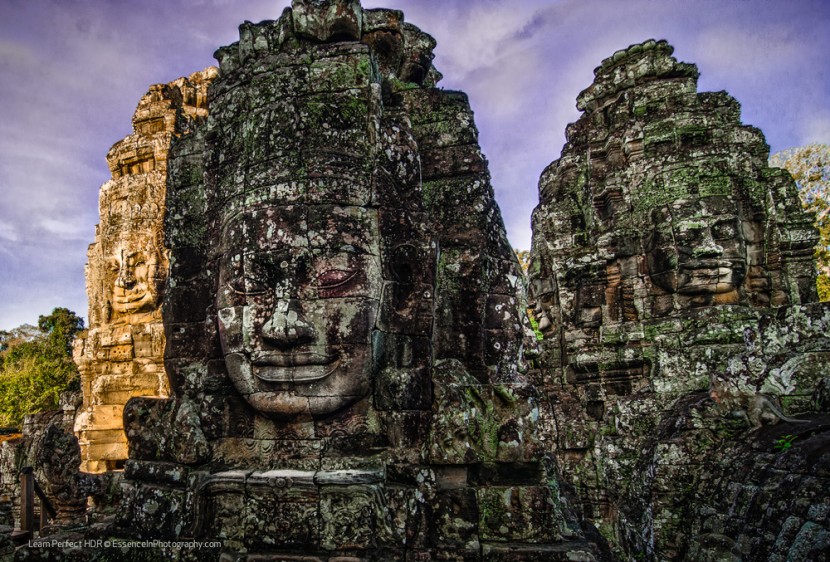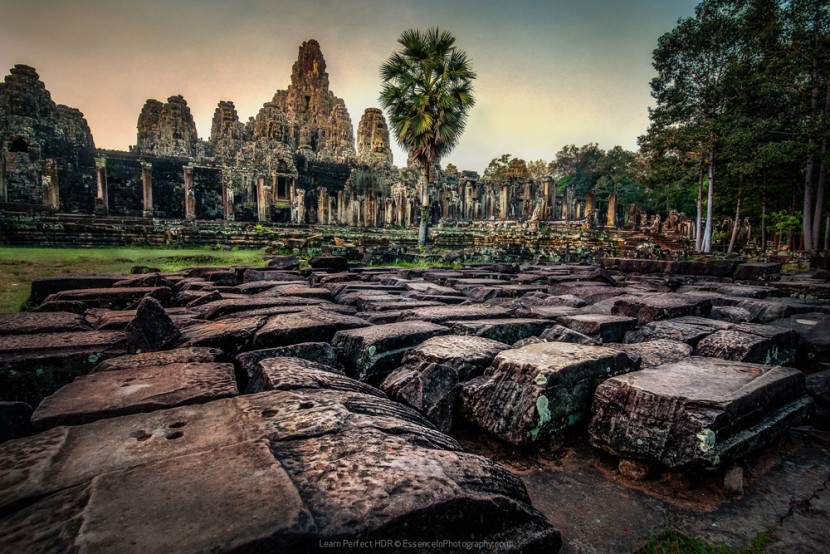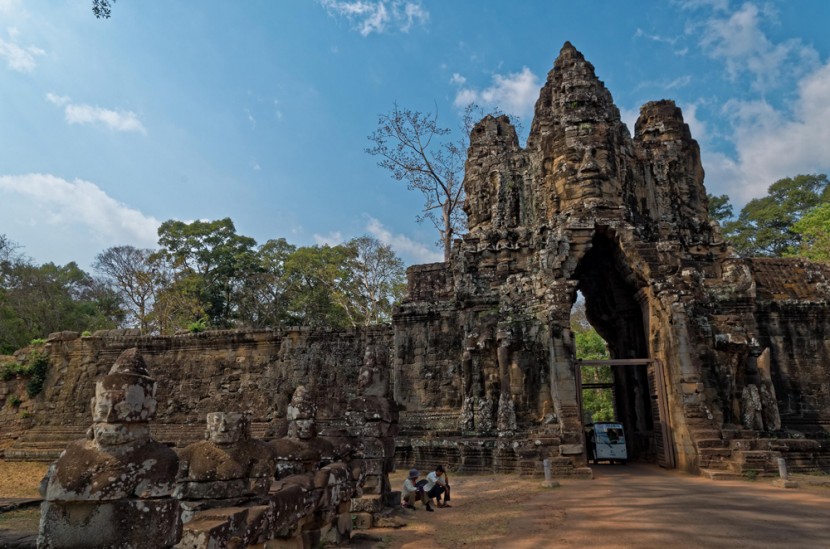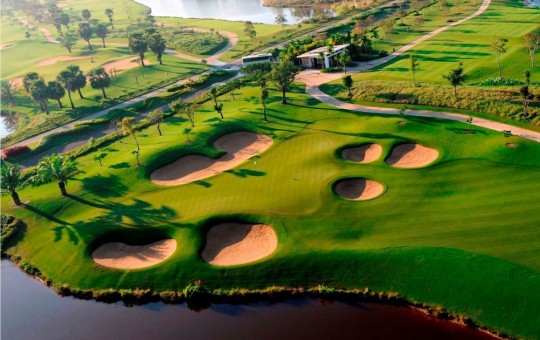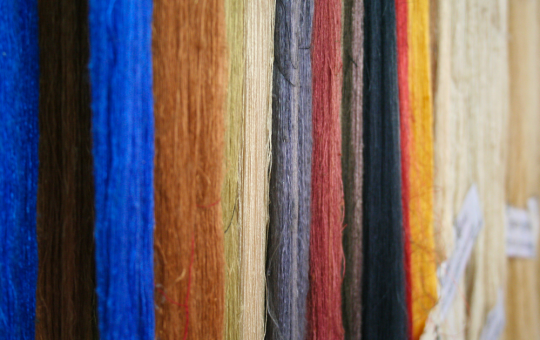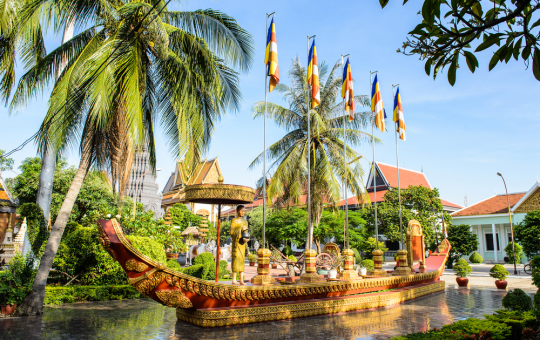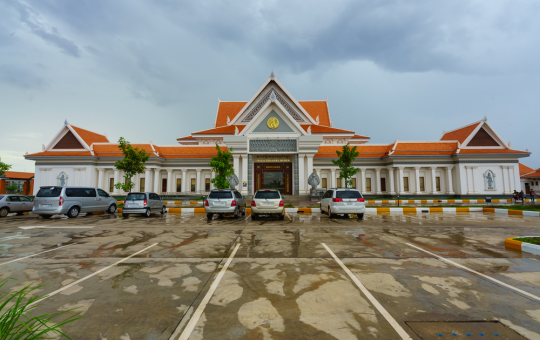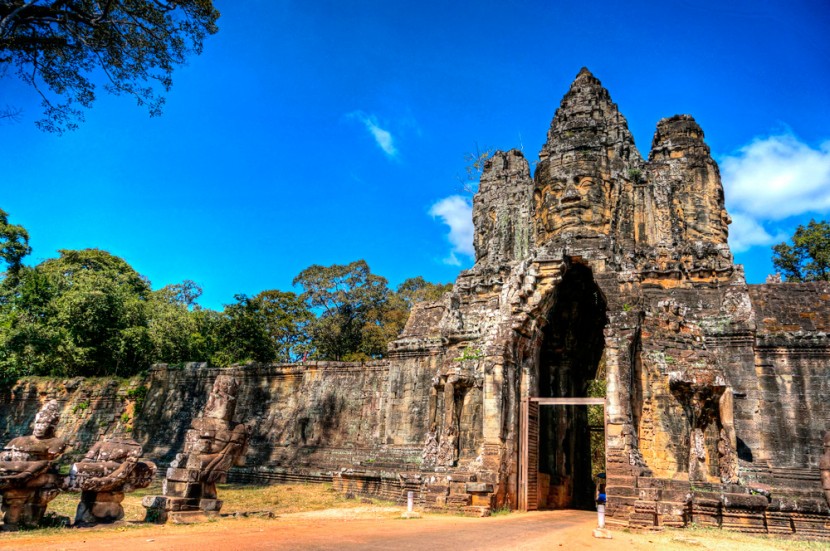
Angkor Thom Temple
Built between the late 12th and early 13th century by Jayavarman VII, the greatest king of Angkor, the 9 sq km fortified city of Angkor Thom, was the last and the most enduring capital city of the Khmer empire.
Situated about 1.7Km north of Angkor Wat, Angkor Thom houses many monuments, several of which are from earlier eras before Jayavarman VII and his successors.
The Prasat Suor Prat, a series of twelve towers spanning north to south lining the eastern side of a royal square in front of Terrace of the Elephants and Terrace of the Leper King, is believed to be built during the reign of Indravarman II.
Angkor Thom, translated to mean Great City, is protected by a 8m high wall measuring 12km in length and surrounded by moat 100m wide. The city has five monumental gates, one each in the north, west and south walls and two in the east wall.
The South Gate, the best-preserved entrance, is the most commonly used entry point for visitors. The approach to the gate is flanked by statues; 54 on each side. On the left are gods while those fierce-looking ones on the right are demons or asuras. This arrangement is taken from the story of the Churning of the Ocean of Milk illustrated in the famous bas-relief at Angkor Wat.
At the center of the city is Jayavarman›s state temple, the Bayon, with the other major sites clustered around the Victory Square immediately to the north. The Baphuon, Phimeanakas, Terrace of Elephants, Terrace of the Leper King, Khleang, Mangalartha, Prasat Chrung, Prasat Suor Prat, Preah Palilay, Preah Pithu, Tep Pranam and The Royal Palace are all located within the Angkor Thom city.
